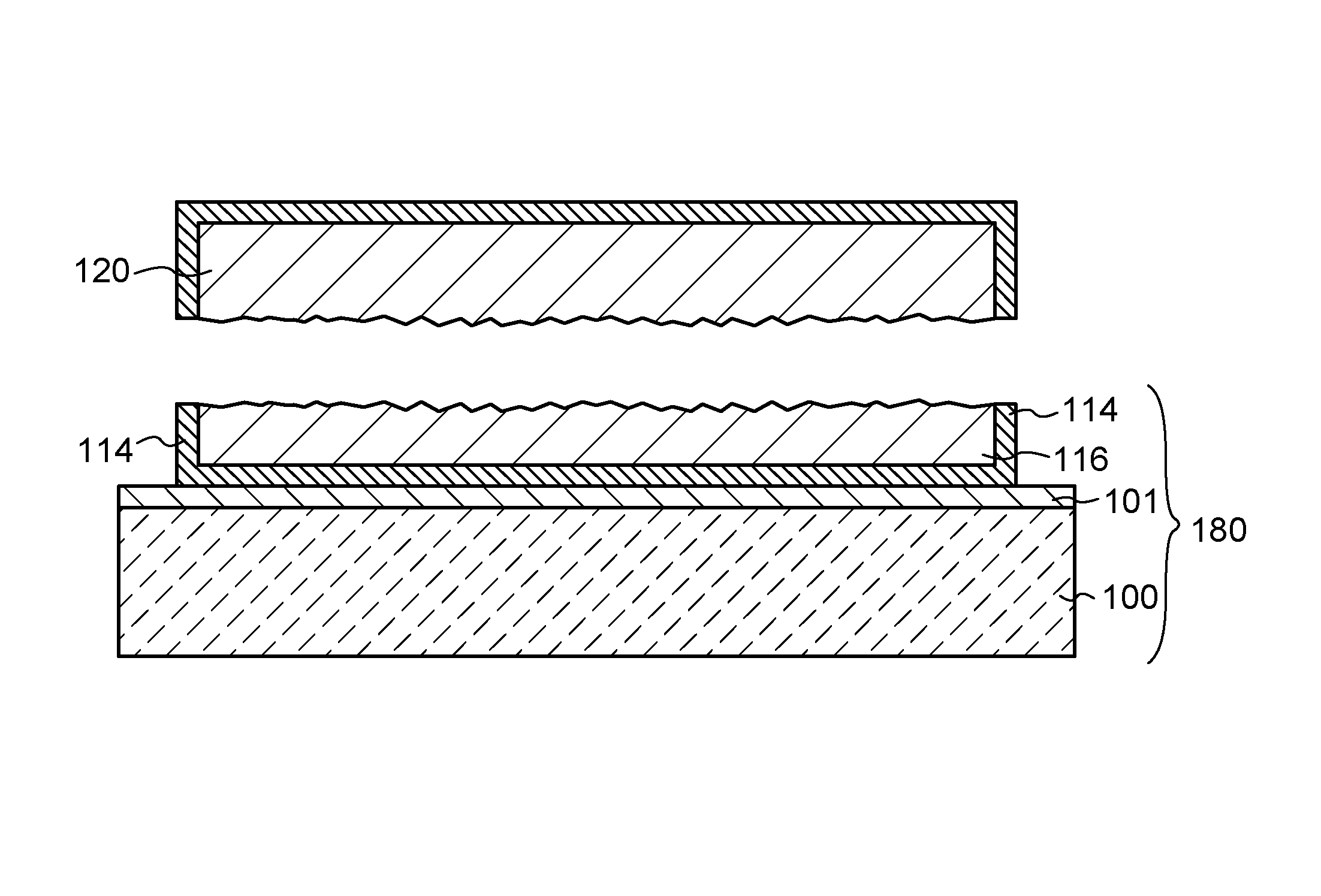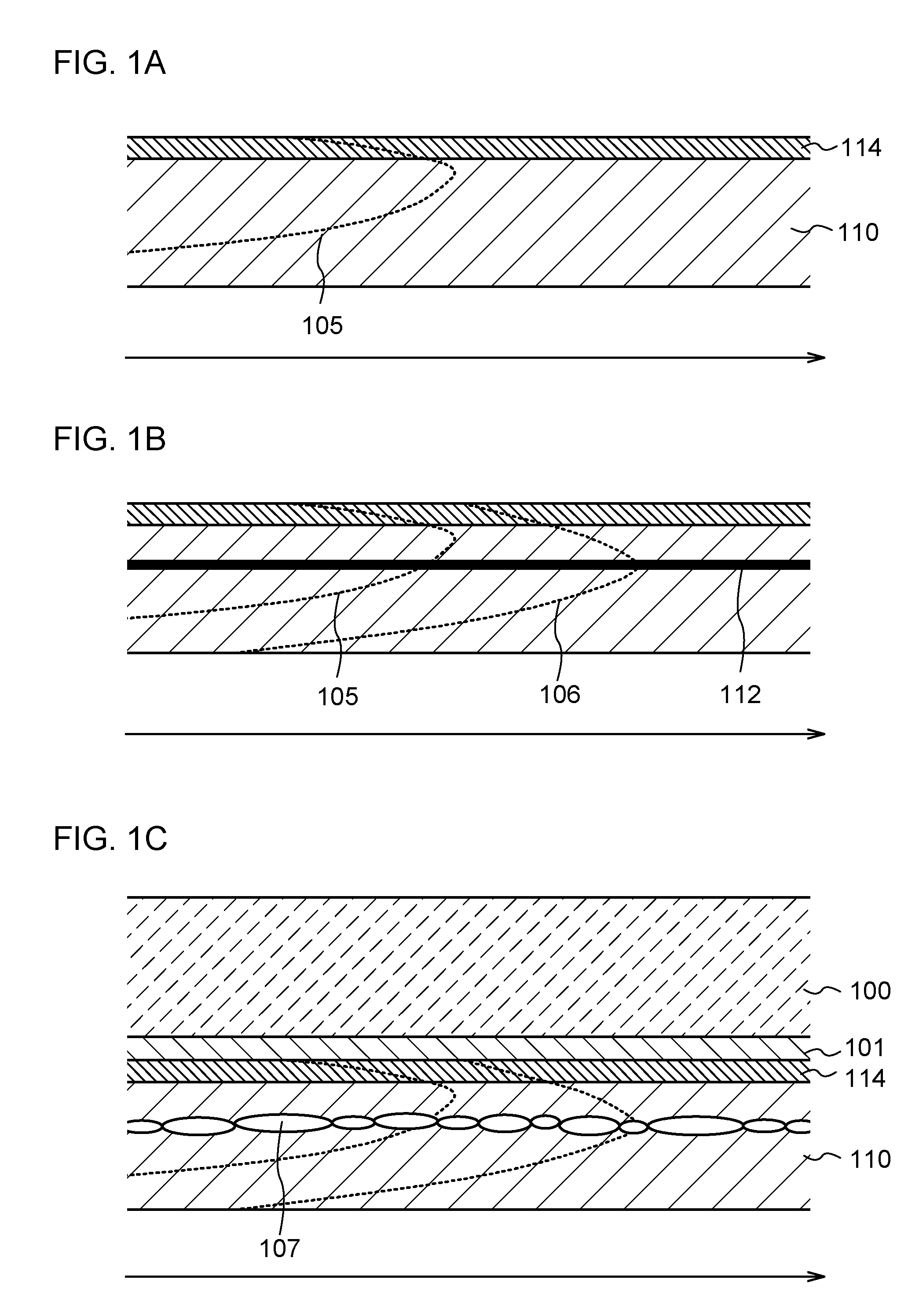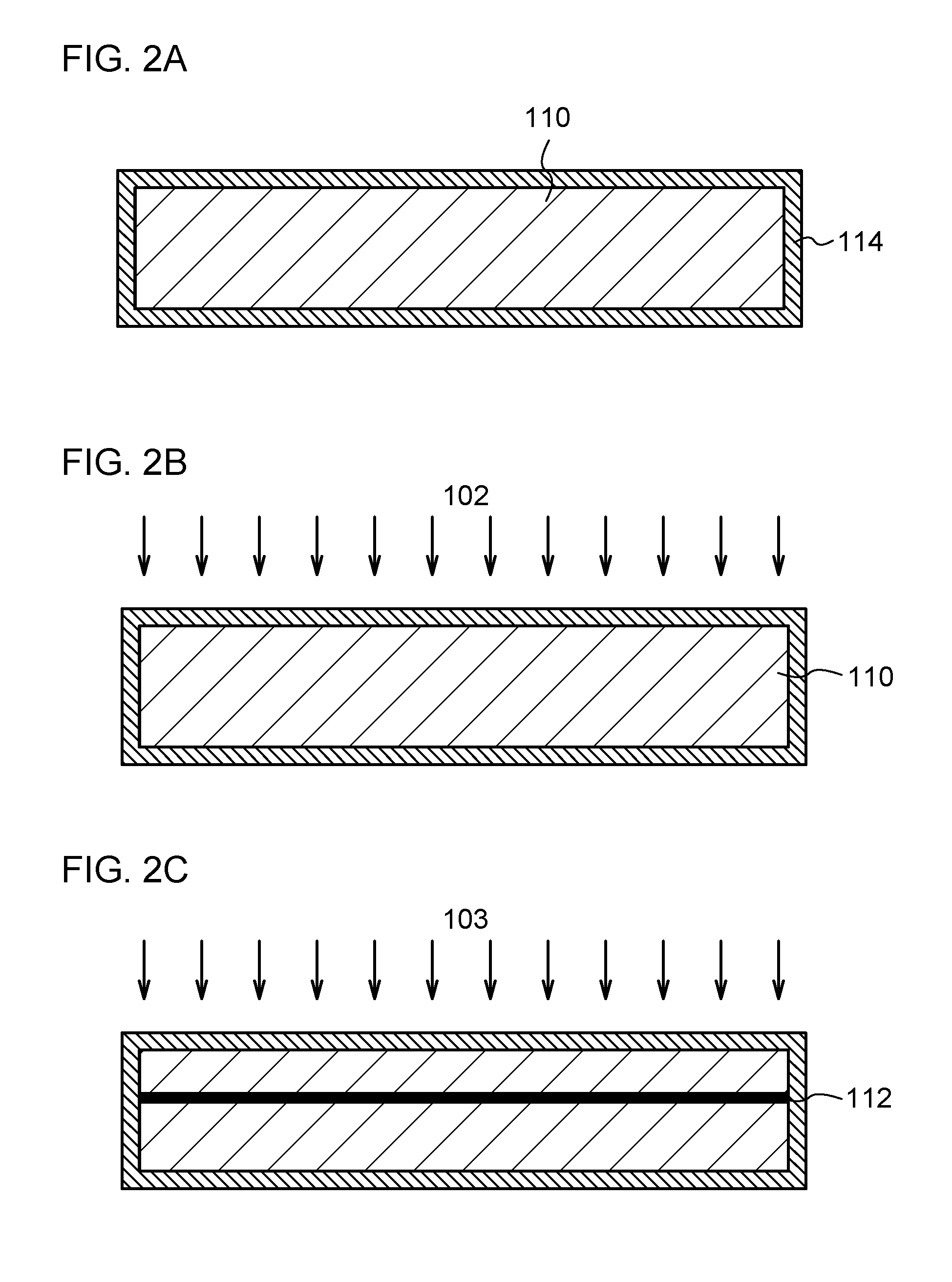Method for manufacturing SOI substrate
a technology of soi substrate and soi ions, which is applied in the direction of semiconductor/solid-state device manufacturing, basic electric elements, electric apparatus, etc., can solve the problems of uneven concentration distribution of hydrogen ions in silicon wafers, increase in surface unevenness, and not all hydrogen ions used for irradiation contribute to separation, etc., to achieve less surface unevenness and high crystallinity
- Summary
- Abstract
- Description
- Claims
- Application Information
AI Technical Summary
Benefits of technology
Problems solved by technology
Method used
Image
Examples
embodiment 1
[0042]First, a semiconductor substrate 110 is prepared as a bond substrate. A polycrystalline semiconductor substrate or a single crystal semiconductor substrate can be used as the semiconductor substrate 110. As the semiconductor substrate 110, for example, a semiconductor substrate that is formed of an element which belongs to Group 14, such as a polycrystalline or single crystal silicon substrate, a polycrystalline or single crystal germanium substrate, a polycrystalline or single crystal silicon germanium substrate, or a polycrystalline or single crystal silicon carbide substrate; or a polycrystalline or single crystal compound semiconductor substrate using gallium arsenide, indium phosphide, or the like can be given. The size of a silicon substrate is typically 5 inches (125 mm) in diameter, 6 inches (150 mm) in diameter, 8 inches (200 mm) in diameter, and 12 inches (300 mm) in diameter, and a typical shape thereof is a circular shape. Note that the shape of the silicon substra...
embodiment 2
[0100]In this embodiment, a method for manufacturing an SOI substrate, which is different from that shown in Embodiment 1 will be described. Only an aspect different from Embodiment 1 is described in this embodiment. A portion which is not described in this embodiment follows the description in Embodiment 1.
[0101]In this embodiment, instead of the carbon ions 102 described in Embodiment 1, cluster ions (CHxHy+) including carbon and hydrogen are used for the irradiation. In the case where the cluster ions (CHxHy+) including carbon and hydrogen are used, carbon and hydrogen can be added at the same time; thus, the hydrogen micro-bubbles 107 can be formed further effectively.
[0102]In the case where the semiconductor substrate 110 is irradiated with the cluster ions including carbon and hydrogen, for example, a dose of the cluster ions may be 1×1015 ions / cm2. The acceleration voltage is changed depending on the value of x. For example, when x is 1, the acceleration voltage may be higher...
embodiment 3
[0109]FIG. 4A is a cross-sectional view illustrating part of the SOI substrate manufactured by the method described in Embodiments 1 and 2 (see FIG. 3C).
[0110]In order to control the threshold voltage of a thin film transistor (TFT), a p-type impurity such as boron, aluminum, or gallium, or an n-type impurity such as phosphorus or arsenic may be added to the semiconductor layer 118. A region to which the impurity is added and the kind of impurity to be added can be changed as appropriate. For example, a p-type impurity is added to a formation region of an n-channel TFT, and an n-type impurity is added to a formation region of a p-channel TFT. The above impurity elements may be added at a dose of approximately greater than or equal to 1×1011 ions / cm2 and lower than or equal to 1×1014 ions / cm2.
[0111]Then, the semiconductor layer 118 is divided into island shapes to form a semiconductor layer 122 and a semiconductor layer 124 (see FIG. 4B).
[0112]Next, an insulating film 126 is formed t...
PUM
| Property | Measurement | Unit |
|---|---|---|
| diameter | aaaaa | aaaaa |
| diameter | aaaaa | aaaaa |
| size | aaaaa | aaaaa |
Abstract
Description
Claims
Application Information
 Login to View More
Login to View More - R&D
- Intellectual Property
- Life Sciences
- Materials
- Tech Scout
- Unparalleled Data Quality
- Higher Quality Content
- 60% Fewer Hallucinations
Browse by: Latest US Patents, China's latest patents, Technical Efficacy Thesaurus, Application Domain, Technology Topic, Popular Technical Reports.
© 2025 PatSnap. All rights reserved.Legal|Privacy policy|Modern Slavery Act Transparency Statement|Sitemap|About US| Contact US: help@patsnap.com



